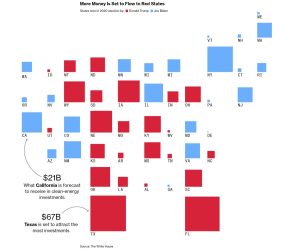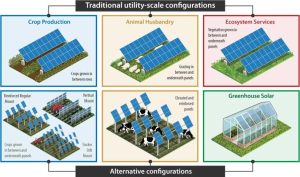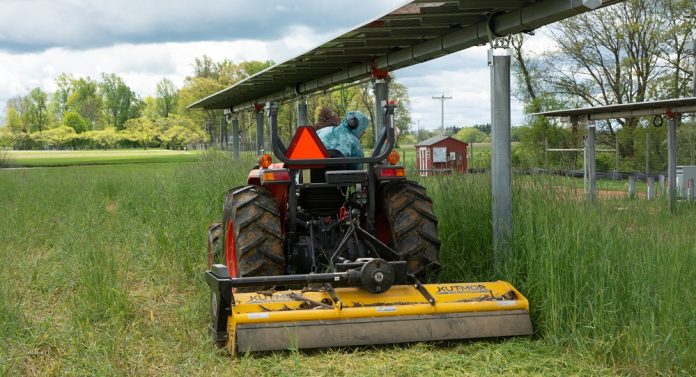In a political landscape with ever-increasing divisions, solar has repeatedly crossed the aisle. This time, a new bill aims to fund agrivoltaics research and development over five years to help determine how to best integrate solar energy generation with U.S.-style farming operations.
In August 2022, no Republican votes were cast in favor of President Biden’s IRA climate law. However, now that the legislation is in effect and cash is on the table, leaders of conservative states are reaching across the aisle and participating in the inevitable renewable energy revolution.
Senators Martin Heinrich (D-NM) and Mike Braun (R-IN) are breaking the partisan mold by introducing the $75 million Agrivoltaics Research and Demonstration Act of 2023. The funding will be dispersed at a rate of $15 million per year from 2024 through 2028. The act stipulates that the Secretary of the Department of Agriculture (USDA) must collaborate with the Secretary of the Department of Energy (DOE) and other pertinent specialists to conduct extensive research and demonstrations of agrivoltaic systems.

According to White House estimates produced before the IRA was passed (and summarized by Bloomberg), red states are expected to gain $337 billion of financial benefit from IRA funded factories and wind, solar and energy storage facilities, while blue states would draw $183 billion. Since the signing of the IRA, these projections have held true as clean energy related factory announcements have strongly trended toward red states.
An agrivoltaic system, as defined in the bill, refers to a system where both solar energy production and agricultural activities, including crop or animal production, are carried out concurrently on the same land. These dual-function systems offer numerous benefits over standalone farming or solar setups, including amplified farm profits and decreased water consumption. The panels create a ‘microclimate’ that conserves evaporated water, while plant transpiration cools the panels, significantly enhancing their performance. Solar panels also provide protective cover to crops against severe rainfall and hail.

Source: National Renewable Energy Laboratory
The research required by this bill will encompass a broad range of aspects, including but not limited to:
Review of current research and gaps related to compatibility of different livestock species and crop types with various agrivoltaic system designs.
Assessment of breeding needs for animals and plants with respect to beneficial characteristics for agrivoltaic systems.
Analysis of risks and benefits of agrivoltaic systems in different regions, including a comparison of greenhouse gas impact.
Assessment of economic scalability of agrivoltaic systems across different agricultural lands, production systems, and regional markets.
Assessment of how to develop agrivoltaic systems on national and local scales while maintaining or increasing agricultural production, enhancing biodiversity, and increasing economic opportunities in farming and rural communities.
Assessment of unique risk management and crop insurance needs of agrivoltaic systems.
Assessment of how federal procurement of agricultural products could build a market for products from farms with agrivoltaic systems.
Suggestions for modifications to incorporate agrivoltaics into existing Federal agricultural conservation, risk management, renewable energy, procurement programs, and investment tax credits.
Based on the study’s findings, the Secretary of the USDA will create a 5-year plan for utilizing the research and various USDA activities to provide better support to agrivoltaics. A comprehensive report outlining the study’s results will be submitted to the relevant committees within three years of the Act’s implementation.
Furthermore, the Act requires the Secretary of Agriculture to “collaborate with USDA Climate Hubs and extension programs to share research findings and translate research findings into educational, outreach, and technical assistance materials for agricultural producers.” It also mandates the establishment of a network of research and demonstration sites across various U.S. regions to examine and showcase the effectiveness of agrivoltaic systems.






